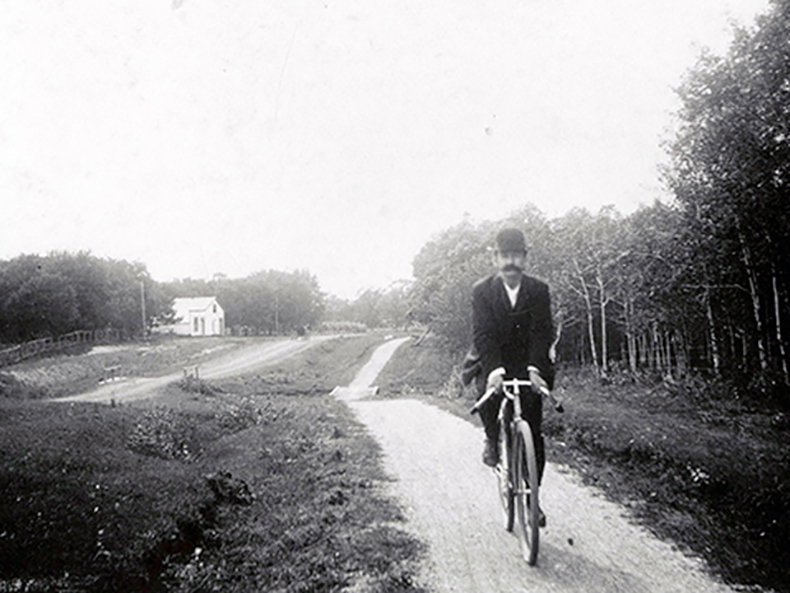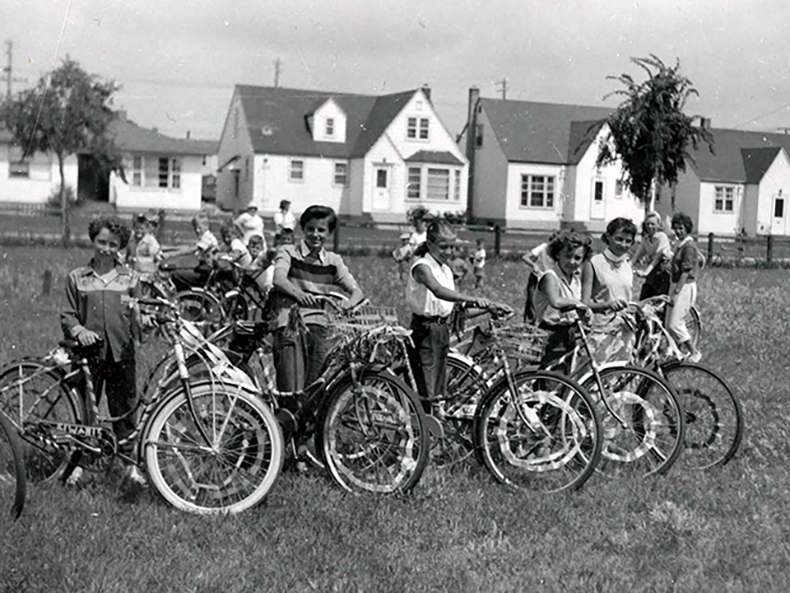A look back at bike paths in Winnipeg
First dedicated path dates back to 1898 on Portage Ave.
September 10, 2019
As a stretch of new protected bike lanes celebrates national attention, the history of bicycle paths in Winnipeg actually dates back more than 120 years.
“One of the earliest by-laws to establish a bicycle path in Winnipeg is from 1898,” said Sarah Ramsden, Senior Archivist at the City of Winnipeg.
The bylaw set apart certain portions of Portage Avenue, starting at Maryland Street and extending to the western limit of the City.
Around the same time, another bylaw was passed regulating the use of the paths.
Then in 1901, another bike path was installed on Sherbrook Street from Portage Avenue to Notre Dame Avenue. It was six feet wide and would have been built between the sidewalk and the street.
“This was done because the roads were too muddy for cyclists to use,” said Ramsden.

Cyclist on Portage Avenue at Silver Heights with Sturgeon Creek in the background, circa 1900.
In the same year, City Council appointed the Cycle Paths Board. It was responsible for creating a network of bicycle paths in Winnipeg.
“This didn’t end up happening, partly because the Board wasn’t around that long,” said Ramsden.
She said archival records show the Board tendered its resignation in 1907 because they thought they weren’t needed anymore.
Ramsden said the Board likely didn’t anticipate the rise of automobile traffic and the kinds of congestion major cities like Winnipeg experience today.

Looking through the records also shows different regulations that were in place for bicyclists through the years. In the early 1900’s, bikes had to have lighted lanterns attached to handle-bars during certain hours to improve safety at night.
“There were even calls for a referendum in 1902 because of this, with many cyclists not wanting to carry lighted lanterns,” said Ramsden. “A fast moving bicycle with a lantern could potentially spook a horse.”
That regulation was eventually rescinded with the addition of street lights.
Ramsden said one of the most interesting parts of her job is seeing how topics being discussed today, like urban infrastructure, were talked about at different points in the city’s history.

“In the case of bicycles, although the subject isn’t anything new, the issues change over time,” she said, adding a variety of perspectives on such matters, and a record of the decisions that continue to impact how we experience and talk about our city, can be found in the archives.
The current City of Winnipeg Pedestrian and Cycling Strategies were developed out of the 2011 Transportation Master Plan, which calls for continuous improvements to the city-wide cycling network and making walking a more attractive choice for travel.
